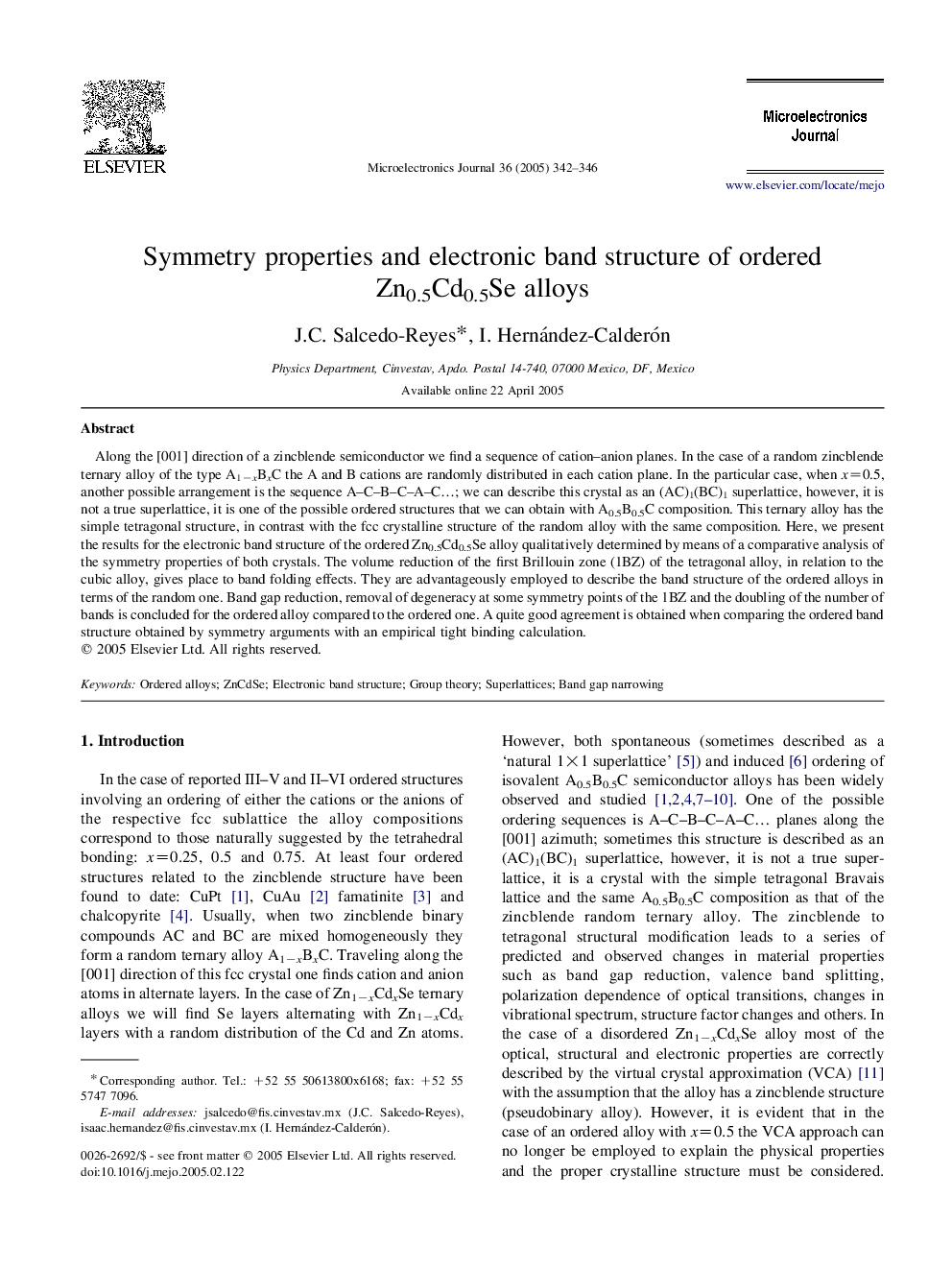| Article ID | Journal | Published Year | Pages | File Type |
|---|---|---|---|---|
| 9671902 | Microelectronics Journal | 2005 | 5 Pages |
Abstract
Along the [001] direction of a zincblende semiconductor we find a sequence of cation-anion planes. In the case of a random zincblende ternary alloy of the type A1âxBxC the A and B cations are randomly distributed in each cation plane. In the particular case, when x=0.5, another possible arrangement is the sequence A-C-B-C-A-Câ¦; we can describe this crystal as an (AC)1(BC)1 superlattice, however, it is not a true superlattice, it is one of the possible ordered structures that we can obtain with A0.5B0.5C composition. This ternary alloy has the simple tetragonal structure, in contrast with the fcc crystalline structure of the random alloy with the same composition. Here, we present the results for the electronic band structure of the ordered Zn0.5Cd0.5Se alloy qualitatively determined by means of a comparative analysis of the symmetry properties of both crystals. The volume reduction of the first Brillouin zone (1BZ) of the tetragonal alloy, in relation to the cubic alloy, gives place to band folding effects. They are advantageously employed to describe the band structure of the ordered alloys in terms of the random one. Band gap reduction, removal of degeneracy at some symmetry points of the 1BZ and the doubling of the number of bands is concluded for the ordered alloy compared to the ordered one. A quite good agreement is obtained when comparing the ordered band structure obtained by symmetry arguments with an empirical tight binding calculation.
Related Topics
Physical Sciences and Engineering
Computer Science
Hardware and Architecture
Authors
J.C. Salcedo-Reyes, I. Hernández-Calderón,
